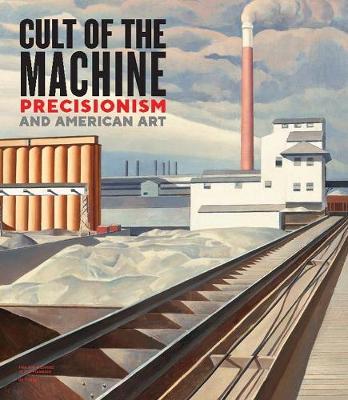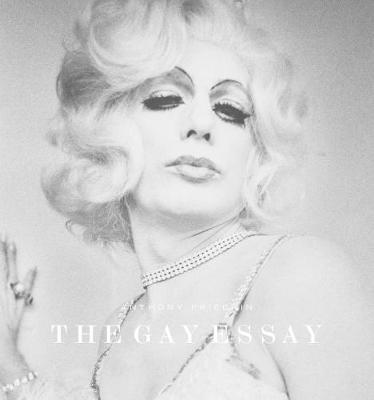Fine Arts Museums of San Francisco (Yale)
3 total works
Danny Lyon
by Julian Cox, Elisabeth Sussman, Alexander Nemerov, Danica Willard Sachs, Ed Halter, and Alan Rinzler
Published 7 June 2016
The first comprehensive overview of an influential American photographer and filmmaker whose work is known for its intimacy and social engagement
Coming of age in the 1960s, the photographer Danny Lyon (b. 1942) distinguished himself with work that emphasized intimate social engagement. In 1962 Lyon traveled to the segregated South to photograph the civil rights movement. Subsequent projects on biker culture, the demolition and redevelopment of lower Manhattan, and the Texas prison system, and more recently on the Occupy movement and the vanishing culture in China’s booming Shanxi Province, share Lyon’s signature immersive approach and his commitment to social and political issues that concern those on the margins of society. Lyon’s photography is paralleled by his work as a filmmaker and a writer.
Danny Lyon: Message to the Future is the first in-depth examination of this leading figure in American photography and film, and the first publication to present his influential bodies of work in all media in their full context. Lead essayists Julian Cox and Elisabeth Sussman provide an account of Lyon’s five-decade career. Alexander Nemerov writes about Lyon’s work in Knoxville, Tennessee; Ed Halter assesses the artist’s films; Danica Willard Sachs evaluates his photomontages; and Julian Cox interviews Alan Rinzler about his role in publishing Lyon’s earliest works. With extensive back matter and illustrations, this publication will be the most comprehensive account of this influential artist’s work.
Published in association with the Fine Arts Museums of San Francisco
Coming of age in the 1960s, the photographer Danny Lyon (b. 1942) distinguished himself with work that emphasized intimate social engagement. In 1962 Lyon traveled to the segregated South to photograph the civil rights movement. Subsequent projects on biker culture, the demolition and redevelopment of lower Manhattan, and the Texas prison system, and more recently on the Occupy movement and the vanishing culture in China’s booming Shanxi Province, share Lyon’s signature immersive approach and his commitment to social and political issues that concern those on the margins of society. Lyon’s photography is paralleled by his work as a filmmaker and a writer.
Danny Lyon: Message to the Future is the first in-depth examination of this leading figure in American photography and film, and the first publication to present his influential bodies of work in all media in their full context. Lead essayists Julian Cox and Elisabeth Sussman provide an account of Lyon’s five-decade career. Alexander Nemerov writes about Lyon’s work in Knoxville, Tennessee; Ed Halter assesses the artist’s films; Danica Willard Sachs evaluates his photomontages; and Julian Cox interviews Alan Rinzler about his role in publishing Lyon’s earliest works. With extensive back matter and illustrations, this publication will be the most comprehensive account of this influential artist’s work.
Published in association with the Fine Arts Museums of San Francisco
Exhibition Schedule:
Whitney Museum of American Art
(06/17/16–09/25/16)
de Young, Fine Arts Museums of San Francisco
(11/05/16–03/12/17)
Fotomuseum Winterthur
(05/20/17–08/27/17)
C/O Berlin Foundation
(09/15/17–12/10/17)
Cult of the Machine
by Emma Acker, Charles Brock, Julian Cox, and Lauren Palmor
Published 10 April 2018
A fresh look at a bold and dynamic 20th-century American art style
Characterized by highly structured, geometric compositions with smooth surfaces, linear qualities, and lucid forms, Precisionism fully emerged after World War I and flourished in the 1920s and 1930s. This insightful publication, featuring more than 100 masterworks by artists such as Charles Sheeler, Georgia O'Keeffe, and Charles Demuth, sheds new light on the Precisionist aesthetic and the intellectual concerns, excitement, tensions, and ambivalences about industrialization that helped develop this important strand of early American modernism.
Essays explore the origins of the style-which reconciled realism with abstraction and adapted European art movements like Purism, Cubism, and Futurism to American subject matter-as well as its relationship to photography, and the ways in which it reflected the economic and social changes brought about by industrialization and technology in the post-World War I world. In addition to making a meaningful contribution to the resurging interest in Modernism and its revisionist narratives, this book offers copious connections between the past and our present day, poised on the verge of a fourth industrial revolution.
Characterized by highly structured, geometric compositions with smooth surfaces, linear qualities, and lucid forms, Precisionism fully emerged after World War I and flourished in the 1920s and 1930s. This insightful publication, featuring more than 100 masterworks by artists such as Charles Sheeler, Georgia O'Keeffe, and Charles Demuth, sheds new light on the Precisionist aesthetic and the intellectual concerns, excitement, tensions, and ambivalences about industrialization that helped develop this important strand of early American modernism.
Essays explore the origins of the style-which reconciled realism with abstraction and adapted European art movements like Purism, Cubism, and Futurism to American subject matter-as well as its relationship to photography, and the ways in which it reflected the economic and social changes brought about by industrialization and technology in the post-World War I world. In addition to making a meaningful contribution to the resurging interest in Modernism and its revisionist narratives, this book offers copious connections between the past and our present day, poised on the verge of a fourth industrial revolution.
An unprecedented look at a moving photographic series that chronicles the gay communities of Los Angeles and San Francisco from 1969 to 1972
For more than forty years, American photographer Anthony Friedkin (b. 1949), creating full-frame black-and-white images, has documented people, cities, and landscapes primarily in his home state of California. During the culturally tumultuous years of 1969 and 1970, Friedkin made a series of photographs that together offer an eloquent and expressive visual chronicle of the gay communities of Los Angeles and San Francisco at the time. This is the first book to explore the series, titled The Gay Essay, in depth, within the broader historical context that gave rise to it.
1969 witnessed the Stonewall riots in New York City and was a turning point in the history of community building and organized political activism among homosexuals in the United States. The Gay Essay provides a singular, intimate record of this crucial moment. Friedkin’s portraits, taken in streets, hotels, bars, and dancehalls, demonstrate a sensitivity and an understanding that has imbued the photographs with an enduring resonance. This handsome book features seventy-five full-page plates and is accompanied by engaging essays and a poem by Eileen Myles.
Published in association with the Fine Arts Museums of San Francisco
For more than forty years, American photographer Anthony Friedkin (b. 1949), creating full-frame black-and-white images, has documented people, cities, and landscapes primarily in his home state of California. During the culturally tumultuous years of 1969 and 1970, Friedkin made a series of photographs that together offer an eloquent and expressive visual chronicle of the gay communities of Los Angeles and San Francisco at the time. This is the first book to explore the series, titled The Gay Essay, in depth, within the broader historical context that gave rise to it.
1969 witnessed the Stonewall riots in New York City and was a turning point in the history of community building and organized political activism among homosexuals in the United States. The Gay Essay provides a singular, intimate record of this crucial moment. Friedkin’s portraits, taken in streets, hotels, bars, and dancehalls, demonstrate a sensitivity and an understanding that has imbued the photographs with an enduring resonance. This handsome book features seventy-five full-page plates and is accompanied by engaging essays and a poem by Eileen Myles.
Published in association with the Fine Arts Museums of San Francisco
Exhibition Schedule:
de Young, San Francisco
(06/14/14–01/04/15)
International Center of Photography, New York
dates TBA


